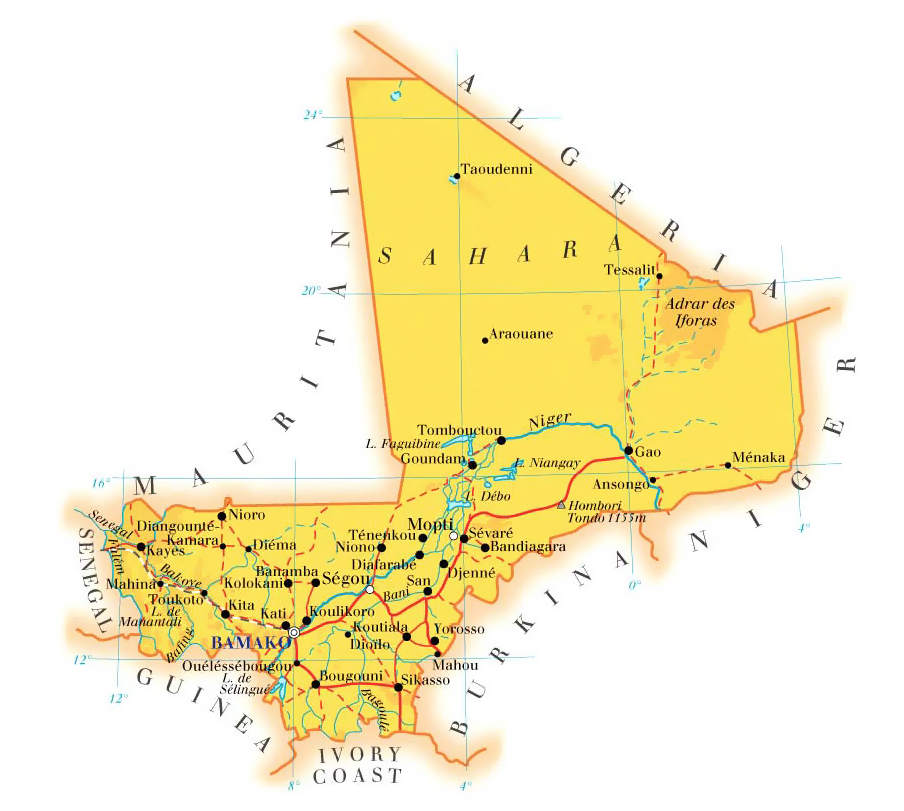Mali Country Profile – Infrastructure

From Cia Factbook (Page last updated on October 13, 2020)
Electricity access:
- population without electricity: 11 million (2017)
- electrification – total population: 35.1% (2016)
- electrification – urban areas: 83.6% (2016)
- electrification – rural areas: 1.8% (2016)
Electricity – production: 2.489 billion kWh (2016 est.)
Electricity – consumption: 2.982 billion kWh (2016 est.)
Crude oil – proved reserves: 0 bbl (1 January 2018 est.)
Natural gas – proved reserves: 0 cu m (1 January 2014 est.)
Airports: 25 (2013)
Airports – with paved runways:
- total: 8 (2019)
- over 3,047 m: 1
- 2,438 to 3,047 m: 4
- 1,524 to 2,437 m: 2
- 914 to 1,523 m: 1
Airports – with unpaved runways:
- total: 17 (2013)
- 1,524 to 2,437 m: 3 (2013)
- 914 to 1,523 m: 9 (2013)
- under 914 m: 5 (2013)
Heliports: 2 (2013)
Railways:
- total: 593 km (2014)
- narrow gauge: 593 km 1.000-m gauge (2014)
Roadways: total: 139,107 km (2018)
Waterways: 1,800 km (downstream of Koulikoro; low water levels on the River Niger cause problems in dry years; in the months before the rainy season the river is not navigable by commercial vessels) (2011)
Ports and terminals: river port(s): Koulikoro (Niger)
Other sources:
https://ppiaf.org/documents/3150/download

These products are the results of academic research and intended for general information and awareness only. They include the best information publicly available at the time of publication. Routine efforts are made to update the materials; however, readers are encouraged to check the specific mission sites at https://minusma.unmissions.org/en or https://peacekeeping.un.org/en/mission/minusma.
Index
Executive Summary / Current Political and Security Dynamics / Recent Situation Updates
Country Profile of Mali
Government/Politics / Geography / Military / Economy / Social / Information / Infrastructure
United Nations Multidimensional Integrated Stabilization Mission in Mali (MINUSMA)
Senior Leaders of Mission / Mandate / Strength / Deployment of Forces / Casualties / Mission’s Military and Police Activities / Security Council Reporting and mandate cycles / Background of Conflict / Actors of Conflict / Timeline